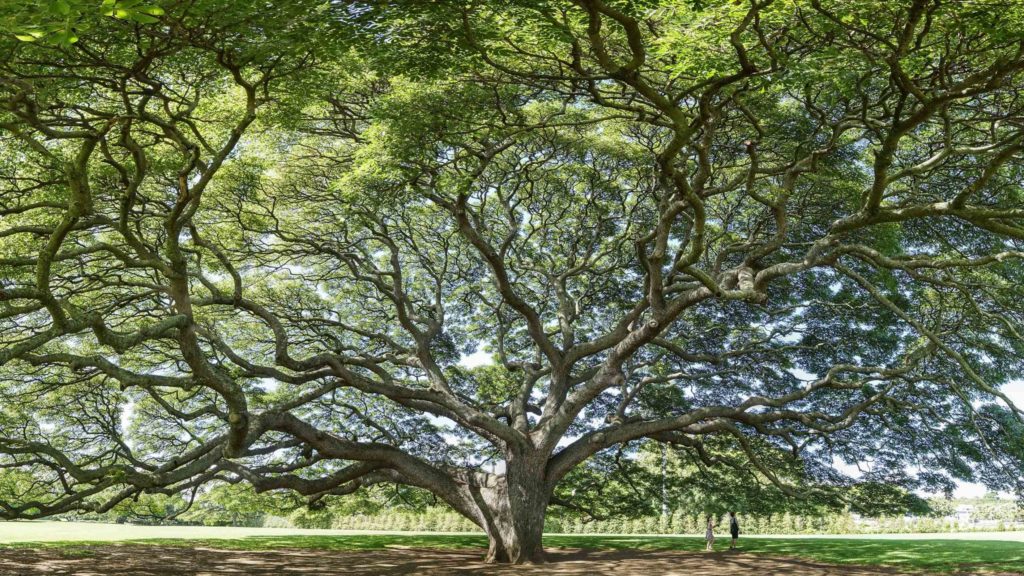Choosing a Tree is a big challenge, success depends on various factors and conditions. We found this interesting article in the book called “How to Grow Practically Everything” by “Zia Allaway and Lia Leenderty”
Trees are wonderful features, adding height, color, and shade to beds and borders. They also provide correctly, and remember to water your trees regularly for the first two years, hedges and climbers also make beautiful vertical features; include a selection of different types of flowers and foliage throughout the year, and lay a carpet of lawn to create a natural green foil for your plants.
 Choosing a tree
Choosing a tree
Every tree brings a range of benefits to the garden. In addition to flowers and fruit, some offer sculptural shapes, colored bark, vibrant autumn color, and differing degrees of shade, or a combination of these qualities. The choice is wide, so decide what you want most from a tree before you buy one.
Assess your needs
Trees are an investment in time, money, and space, so it is important to pick one that suits your garden. Soil type and aspect are important considerations, but so too is the amount of space you have available, bearing in mind how large the tree will grow. Also remember that trees cast shade, and draw large quantities of moisture and nutrients from the soil, affecting other plants growing nearby. They can also undermine foundations with their roots, so be careful to site your tree at a distance from buildings. You should also prioritize the qualities you want from your, whether it’s esthetic beauty ,structure, privacy, or wildlife habitat.
Seasonal interest
Some trees have several seasons of interest and offer great garden value. Prunus serrula has spring blossoms and copper bark for winter appeal. Both malus x moerlansii ‘liset’. And sorbus vilmorinii have spring flowers and autumn fruits; the sorbus also has attractive foliage. With spring flowers, summer berries, and rich autumnal tints, amelancheir lamarkii has a lot to offer and is ideal for smaller plots.
1. prunus serrula; 30 ft (10 m
2. malus x moerlandsii ‘liset’; 20 ft (6 m)
3. sorbus vilmorinii; 15 ft (5 m)
4. amelanchier lamarckii; 30 ft (10 m)
Design effects
Trees play a number of useful and decorative roles in the garden. Where there is space and clear line of sight, consider a tree with a strong structure, such as a birch or decorative cherry, to act as a stand-alone focal point. A tree with a good canopy, such as the indian bean tree, catalpa bignonioides, provides shade from hot summer sun when planted close to a south-facing seating area. Large-leaved trees can also help create a tropical effect in the garden. Try the fragrant snowbell, styrax obassia, with its scented white flowers, or the evergreen loquat, eriobotrya japonica, an ideal choice for year –round privacy.
How to plant a tree
An investment in time and money, a tree will eventually become a striking presence in your garden and make a beautiful year round-feature. Plant it well and take care of it afterward, and your tree will, soon pay dividends, providing you with color, shade, and structure for many years to come.
When to start – Late autumn
At its best – All year round
Time to complete – 2 hours
You will need
- Tree
- Spade
- Fork
- Cane
- Stake
- Tree tie
- Mulch
- Gardening gloves
 1. PREPARE THE GROUND
1. PREPARE THE GROUNDDig a circular hole twice the width and the same depth as the root ball. Do not dig over the base, because this may cause the tree to sink once planted. Instead, puncture the base and sides with a garden fork to encourage the roots to penetrate.
2. CHECK PLANTING DEPTH
Most trees are planted with their root ball slightly above the soil surface, which helps them to establish a strong root system. Place the tree in the hole, lay a cane across the top to check the level, and add or remove soil as required.
3. TEASE OUT ROOTS
Lift the tree from the hole and use your fingers to gently tease the outer roots away from the root ball. This will encourage them to root into the surrounding soil, helping the tree establish, and is particularly important it the tree is “root-bound”.
4. PLANT THE TREE
Hold the tree in the hole and turn it round until its best side is facing in the right direction. Then fill around the root ball with the excavated soil. Do this in three stages, adding soil and gently firming it down with your root each time. Make sure there are no air pockets between the roots.
5. GENTLY FIRM IN
Make sure the root ball is just above the soil surface. As a guide, look for the “nursery line”, where the trunk darkens at the base, showing the level the tree was grown at in the nursery. This must not be buried. Then add a thin layer of soil over the root ball so that no roots are exposed.
6. ATTACH TREE TO WOODEN STAKE
choose a stake that will reach a third of the way up the trunk. Use a mallet to hammer it into the ground at an angle of about 45 degrees with the top facing the prevailing wind. Attach a tree tie at the point where tree and stake meet, using a spacer to prevent them rubbing together.
7. AFTER CARES
Water the tree well, and then apply a thick mulch, such as composted bark chippings, to suppress competing weeds and seal in moisture. Keep it clear of the stem. Water the tree regularly for two years, and check the loosen ties frequently. The ties can be removed after two or three years when the tree has fully established.
More Tree info can be found in our blogs:
Maple Tree
Mimosa Tree
Pomegranate Tree
Dawn Redwood
Coast Redwood

